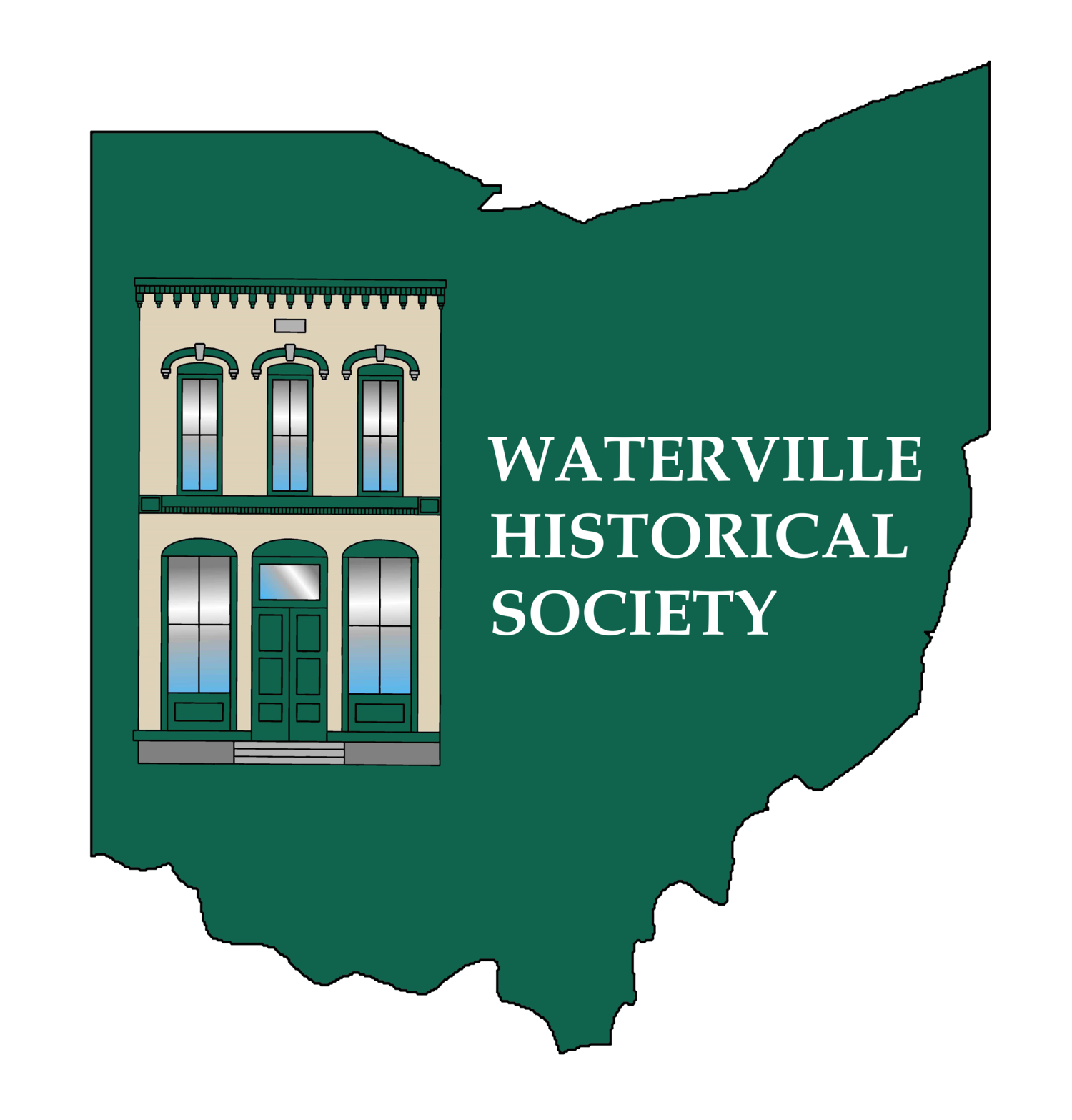Where is Main Street, Waterville?
John Pray established the village of Waterville in 1831 astride the stagecoach trace between Fort Defiance and Fort Detroit, which naturally followed the earlier Indian trails connecting their villages along the Maumee River and beyond. Naturally then, this part of the trail from North Street to South Street on his early plat became “Main Street” (John, we must remember, was a practical New Englander.) The primary business opportunity for those pioneers who built along Main Street was to cater to travelers along this route. Most of those early buildings built as “hotels” or inns still exist. Pray’s Columbian House, the Pray-Starkweather House built by Oliver Pray in 1837, and the Wabash Hotel, built between 1835-1836 just across the road from the Columbian House all exist today, although the Wabash was moved over to Second Street in the 1850s. Only twelve years later the Wabash and Erie Canal (to later become the Miami and Erie Canal) opened for business. Now a canal boat ride was much more comfortable, more reliable, and probably a bit faster than the stagecoach or horse drawn wagon, so the hotel business declined on Main Street. Businesses grew and thrived on Third Street which ran next to the canal. Stores grew to trade with canal boat captains and passengers. The thriving businesses on Third Street became the main business district even though Main Street down by the river retained its name. Even the blacksmith moved from Main Street up to the corner of Wood and Second Street to be closer to the action (It became Graf’s blacksmith shop in the 1880s.)
Time and history marches on and by 1900 the canal was nearly out of business, done in by the way more efficient railroads. The Third Street businesses were well established and continued to thrive, except for the big Pekin Mill at the north end of Third Street which totally depended on the canal not only for power but to transport its products. The mill was torn down about 1916. People could be transported from Waterville to Toledo in 20 to 30 minutes on the electric interurban railway. The electric railway soon gave way to the rise of the automobile, as people preferred personal transportation over public transport. This development however gave Waterville’s Main Street a second life. Highways carried many more people, now free to travel wherever they wanted to go. River Road was sometimes called the Toledo-Napoleon Road. The canal remained in place until the 1930s in the Toledo-Maumee end and was not filled in through Waterville until 1950, so the River Road through Waterville became Route 24. Route 64 was routed over the Waterville bridge and along Main Street to Wood Street (now Farnsworth Road.) With this highway traffic service stations and restaurants proliferated along our Main Street, from North Street to the intersection with River Road at Roche de Boeuf until 1950 when the newly completed Anthony Wayne Trail carried all Route 24 traffic. At some point we stopped officially using “Main Street” as the name of the street through our town. Today we have no “Main Street” and it is North and South River Road. The street is quiet again and mostly residential. Third Street continues to be our uptown business district and has hosted a great number of business enterprises over the years. Should we miss not having a “Main Street” in our town? John Pray’s original Town Square will soon open again as a riverfront city park.
Note: Information on many of the “Main Street” businesses on 3rd Street and along River Road can be found at the Wakeman Archives.
